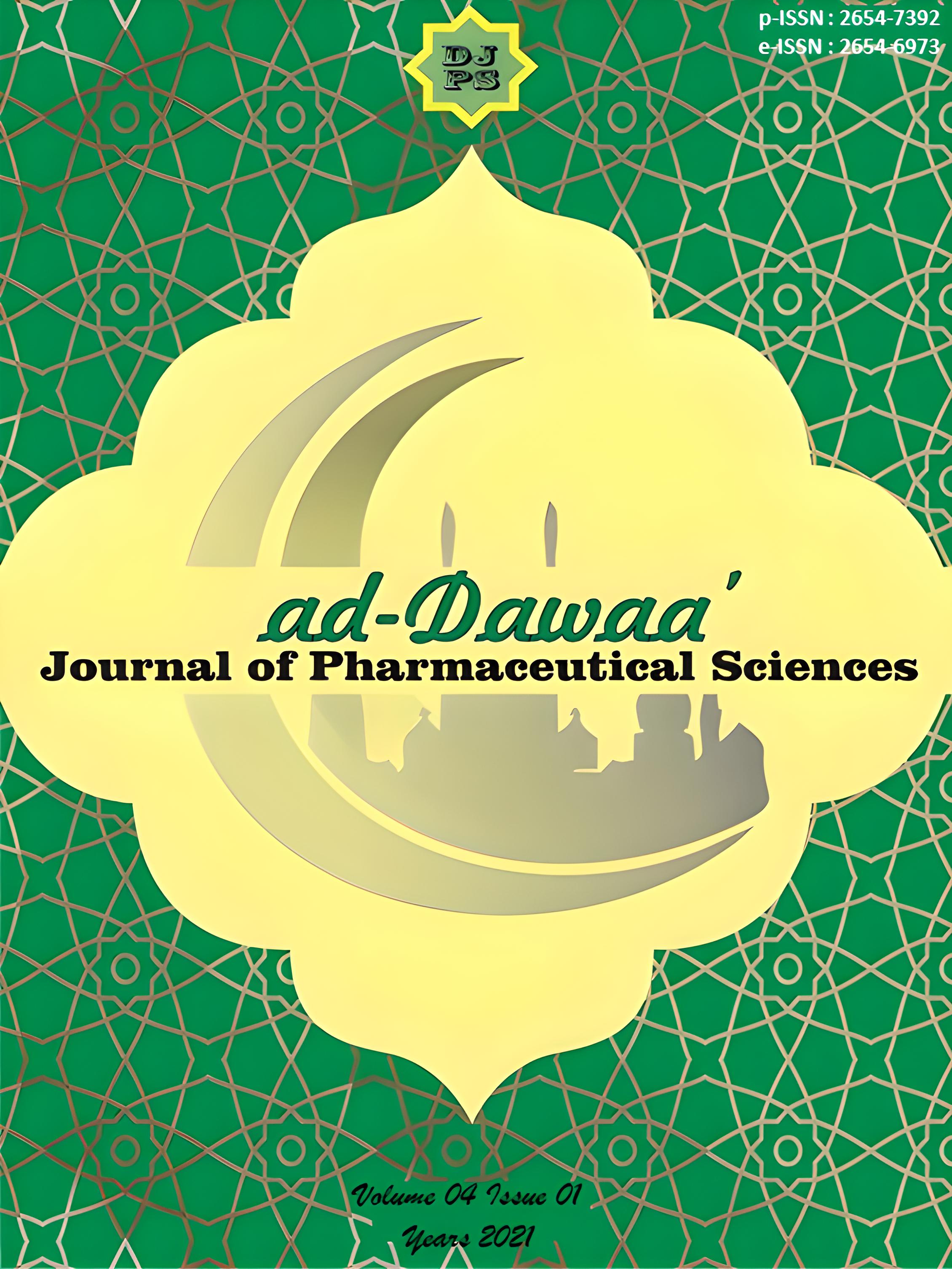Antituberculosis Activity of Parang Romang (Boehmeria virgata (Forst.) Guill) Stem Extract
Abstract
Parang Romang (Boehmeria virgata (Forst.) Guill) is one of the plants empirically used by the people of South Sulawesi. This study aimed to test the activity of Parang Romang Extract against Mycobacterium tuberculosis. The 96% ethanol extract obtained was fractionated by the liquid-solid extraction method: obtained n-Hexan soluble extract and n-Hexan insoluble extract. Samples of 96% ethanol extract, soluble extract of n-Hexan and insoluble extract of n-Hexan were made in series of concentrations of about 25, 50, 75, and 100 µg/ml. The inhibition test of Mycobacterium tuberculosis used the MODS method on the Mycobacterium tuberculosis strain H37RV. Color reagents then identify extracts that provide inhibition. The results of the minimum inhibition concentration of Mycobacterium tuberculosis showed that a 100 µg/ml of n-Hexan soluble extract was able to inhibit the growth of Mycobacterium tuberculosis strain H37RV.Downloads
References
Cambie & Ash.(1994) Fijian Medicinal Plant. CSIRO Catalogoing in Publication Entry: Australia.
Chen et al. (2003). Flora Of China. Boehmeria.
Jash S. K., and Brahmachari G. (2013). Recent Progress In The Research Of Naturally Occurring Flavonoids: A Look Through. India : Visva-Bharati Universit
Kumar et al. Use of Secondary Metabolite in Tuberculosis: A Review. Meerut Institute of
Rusdi, M. (2014). Skrining Fitokimia dan Uji Toksisitas Ekstrak Akar Parang Romang (Boehmeria virgata (Forst) Guill.) terhadap Larva Udang Artemia salina Leach. Jurnal FARBAL: Vol. II no. 2. 2014.
Rusdi M, et al. (2018). Perbandingan Metode Ekstraksi Terhadap Kadar Flavonoid Total dan Aktivitas Antioksida Batang Boehmeria virgata. UINAM Press: Makassar.
Semwal et al. (2009). Chemical Constituents From The Leaves Of Boehmeria Rugulosa With Antidiabetic And Antimicrobial Activities. India : Asian Natural Products Research.
World Health Organization (2017). Global Tuberculosis Report 2017. Geneva: WHO Press;
Once an article was published in the journal, the author(s) are:
- granted to the journal right licensed under Creative Commons License Attribution that allows others to share the work with an acknowledgement of the work's authorship.
- permitted to publish their work online in third parties as it can lead to wider dissemination of the work.
- continue to be the copyright owner and allow the journal to publish the article with the CC BY-SA license
- receiving a DOI (Digital Object Identifier) of the work.




1.png)